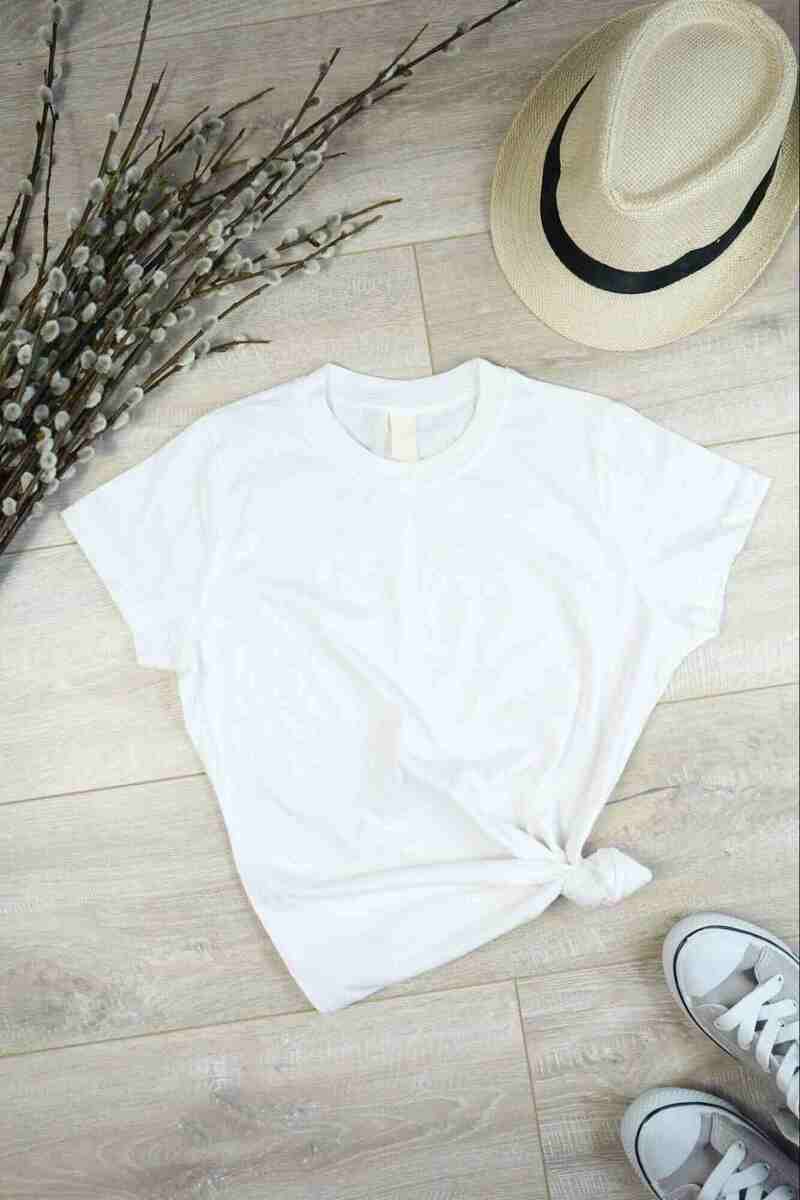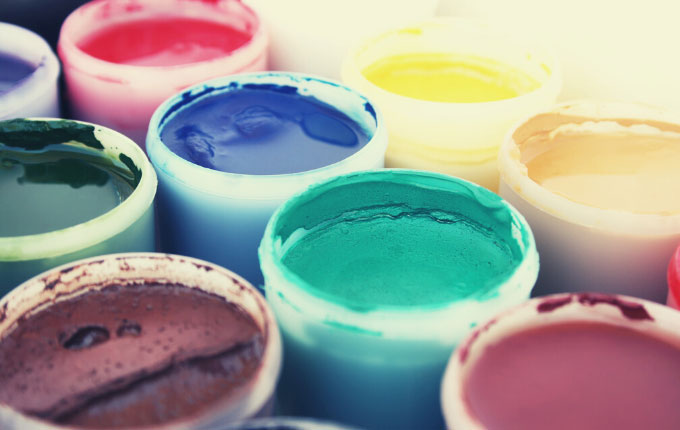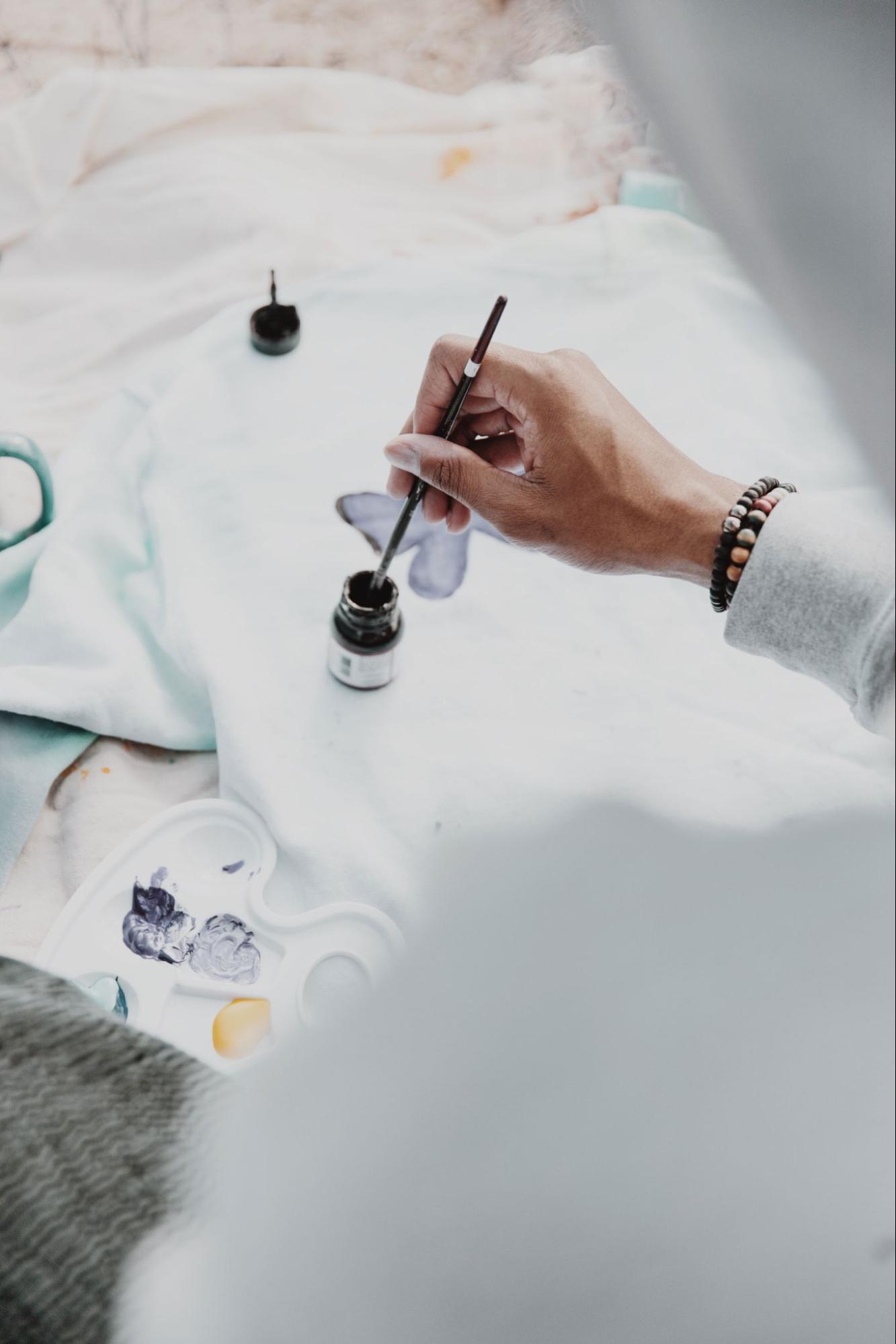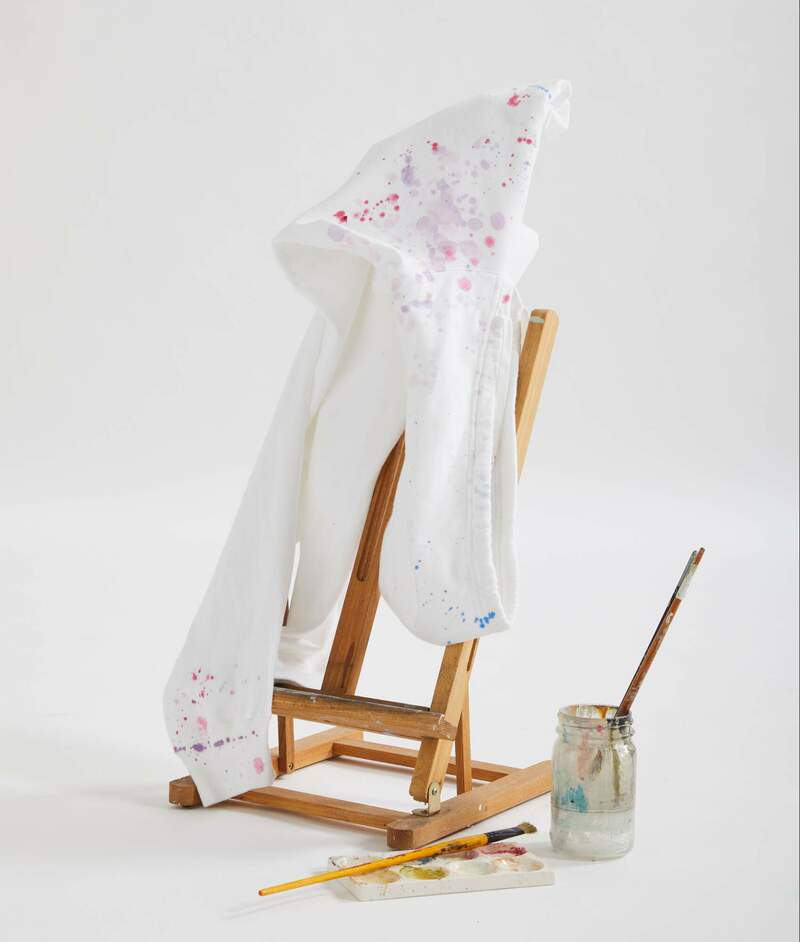
How to Paint on T-Shirts
By ShirtSpace | Nov 30, 2022 | Updated May 20, 2024Watch out printing, because painting a t-shirt is another way to customize apparel through artistry and craftsmanship. Do you have a favorite t-shirt that you don't want to part with, but you're tired of the way it looks? Well, there's no need to get rid of it! T-shirt painting is the easiest way to give it a new lease on life. With just a few supplies and some time, you can transform an old t-shirt into a masterpiece. If you're interested in learning more about painting on a shirt, read on for our top tips.
Hero image source: LOGAN WEAVER
Painting on Clothing
Painting on clothing has become more and more popular! If you have an artistic hand, consider painting your t-shirt — either with a brush, spray can, or airbrush machine. You can free-hand or use a stencil when painting a t-shirt.
The Right Type Of T-shirt for Painting
One of the most important decisions you'll need to make when painting a plain t-shirt is choosing the right type of t-shirt material. While you can technically use any type, the best t-shirts for painting are white cotton t-shirts. This is because they provide a blank canvas for you to work with, and they're also less likely to bleed when you're painting on them.

Image source: Mediamodifier
When you try t-shirt painting on shirts with different colors, you'll likely find that the colors don't show up the way you want them to. This is because the colors of the shirt interferes with the paint colors. For example, if you have a yellow shirt and add blue paint to it, it may end up looking more green than blue. This is where a strong sense of color theory and complementary colors comes in handy. If you don’t want to worry about how the colors appear, going for a plain white tee is always a safe choice.
When it comes to the shirt fabrication, we recommend a sturdier material, like 100% cotton or a cotton/poly blend. We also recommend opting for a midweight or heavyweight t-shirt, so that the fabric support the painted design.
The Right Paint to Use on T-Shirts
When painting a t-shirt, you'll want to use fabric paint so that it does not bleed or come off in the wash. You can find this type of paint at most craft stores. If you have oil paint, spray paint, or acrylic paint, you can also use those, but you'll need to add a fabric medium to them, so they're compatible with fabric. Otherwise, you may be disappointed when your shirt painting efforts disappear in the wash.

Image source: Ruzanna with Getty Images
Choose Your Design for T-Shirt Painting
You can either freehand a design or create your own stencil when t-shirt painting. If you are using stencils, make sure to put a piece of cardboard inside the t-shirt to ensure no paint seeps through to the back of the t-shirt. Once in position, flatten the t-shirt and apply the stencil into place.

Image source: LOGAN WEAVER
Hand Painting on a T-Shirt
Once you have your design, all planned out; it is time to start the actual painting on a shirt. Use even strokes and take your time so that the paint does not bleed under the stencils (if you are using them). Allow the paint to dry completely before moving on to the next step.
Spray Painting on a T-Shirt
For spray-painting a t-shirt, It is essential to prepare your work area by covering the surface with newspaper or plastic and making sure you are in a well-ventilated space. Be sure to wear protective clothing such as gloves and a mask. Apply a base coat of paint evenly and let it dry completely. Then, use stencils or freehand techniques to add any desired designs or patterns. Allow the paint to dry completely before wearing or washing the shirt. With some creativity and patience, you can create a one-of-a-kind piece of wearable art.
Tips for Painting on a T-Shirt
-
Place a piece of cardboard or another flat piece of material in the body of the shirt or sweatshirt to prevent bleeding to the other side.
-
Use glitter paint to add some extra sparkle!
-
Too much paint can make your shirt stiff, so be sure to paint in thin layers when possible
Heat Set The T-Shirt Fabric Paint
Choosing the right t-shirts for painting is the most important step in ensuring your design lasts. However, even with the right t-shirts and paint, you'll need to heat set the paint so that it doesn't crack or peel over time. The best way to do this is by using an iron. All you need to do is place a piece of cotton fabric over your design and iron it on medium heat for about 3 minutes. Once you are done, allow the shirt to cool completely, and then feel free to wash it according to the fabric care symbols that appear on the neck tag or inside label.

ComfortWash by Hanes GDH450 Hoodie pictured
Your Custom, Hand-Painted T-Shirt
Painting on a t-shirt is a great way to show off your personality and style. From choosing the right t-shirts for painting to heat setting the paint, there are a few steps you need to follow to ensure your design lasts. Painting t-shirts is a skill that can be refined over time. But with these tips, you'll be well on your way to creating a one-of-a-kind t-shirt that you can enjoy for years to come. Have you ever painted on shirts before? Give us your tips and tricks for painting a t-shirt in the comments below!



Comments
Jasa Konveksi Bandung02/14/2025 02:54 am
Your article is very inspiring with high-quality content. Warm Regard.
Reply
ShirtSpace02/17/2025 07:13 pm
Hi, Jasa. How kind of you to say! Thanks for reading our blog!
Reply
Iflin05/05/2024 09:46 am
Thank u, ShirtSpace, for this wonderful blog post. I am starting to experiment with painting on fabric. May I check whether there is a need to add water to the fabric paints first before painting on the fabric?
Reply
ShirtSpace05/06/2024 03:52 pm
Hi, Iflin! This depends on the type of fabric paint and effect. We recommend always reading the directions on the paint packaging. Most often, fabric paints are acrylic based. This means you can easily think the paint with a bit of water. If you airbrush paint, you might use water in your paint mix too. Thanks for reading our blog!
Reply
Cathy11/20/2023 05:07 pm
I have a t-shirt that has an existing heat applied picture on it. I want to add to the picture ( over the iron-on) will the paint adhere to the iron on ???
Reply
ShirtSpace11/21/2023 04:31 pm
Hi, Cathy. That is a great question. There are several factors that could impact whether the paint will adhere to the existing heat transfer, which include, but are not limited to: The type of heat transfer that currently exists on the shirt, the type of paint being used, the garment, as well as the paint technique and aesthetic desired. Unfortunately because of all of these factors, we are unable to give a solid answer. Our first instinct is to try to paint with screen printing ink, so that you get good thickness and adherence, but since we have not tried this ourselves, we have no idea if this is only a good idea in theory. You can always test another garment that you care about less first to see how it turns out, and then move on to the t-shirt you had in mind to begin with. We wish you the best with your t-shirt painting journey. If you do decide to experiment with printing and painting on the same garment, we would love to hear your results! You can tag us or use the hashtag #ShirtSpace on Facebook, Instagram and TikTok, if you feel inclined. Thank you for reading our blog!
Reply
Zwigil Monari04/20/2023 11:30 am
I have learned a lot about t-shirt painting. I am interested to learn more and make beautiful pieces I can sell for income generating activity. In Kenya am not sure I can get the best fabric paints, can you help source and I import for my use? Do you have books one can buy and use?
Reply
ShirtSpace04/24/2023 02:56 pm
Hi, Zwigil. Thank you so much for taking the time to read our blog. We are glad you have become inspired to take up t-shirt painting as a business opportunity. We sell blank apparel, so we do not provide fabric paints at this time. We wish you the best with your t-shirt painting journey!
Reply
Leave a Comment
We take your privacy seriously and will not share or publish your email address.
This site is protected by reCAPTCHA and the Google Privacy Policy and Terms of Service apply.